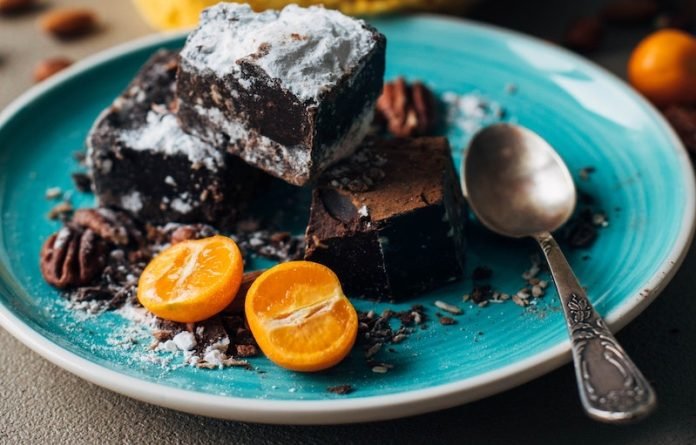
Australians are predicted to spend around A$1.7 billion on chocolates, hot cross buns and other special foods this Easter season.
Chocolate has a long history of production and consumption. It is made from cacao beans that go through processes including fermentation, drying, roasting and grounding.
What is left is a rich and fatty liquor that is pressed to remove the fat (cocoa butter) and the cacao (or “cocoa”) powder which will then be mixed with different ingredients to produce dark, milk, white and other types of chocolates.
There are several health benefits and potential problems that come in these sweet chocolatey packages.
The good news
Cacao beans contain minerals like iron, potassium, magnesium, zinc and phosphorus and some vitamins. They are also rich in beneficial chemicals called polyphenols.
These are great antioxidants, with the potential to improve heart health, increase nitric oxide (which dilates blood vessels) and reduce blood pressure, provide food for gut microbiota and promote gut health, boost the immune system and reduce inflammation.
However, the concentration of polyphenols in the chocolate we eat depends largely on the cocoa solid amounts used in the final product.
In general terms, the darker the chocolate, the more cocoa solids, minerals and polyphenols it has.
For example, dark chocolates may have around seven times more polyphenols compared to white chocolates and three times more polyphenols compared to milk chocolates.
But also some bad news
Unfortunately, the health benefits of cocoa solids are easily offset by the high sugar and fat content of modern-day chocolates.
For example, milk and white chocolate eggs are on average 50% sugar, 40% fat (mostly saturated fats) – which means a lot of added kilojoules (calories).
Also, there may be some side effects that come with ingesting chocolate.
Cocoa beans include a compound called theobromine.
While it has the anti-inflammatory properties responsible for some of the health benefits of chocolate, it is also a mild brain stimulant that acts in a similar way to caffeine.
The mood boost it offers may also be partly responsible for how much we like chocolate. Dark chocolate has higher theobromine compared to milk and white chocolate.
But accordingly, overindulging in chocolate (and therefore theobromine) may lead to feeling restless, headaches and nausea.
What else is in your chocolate?
Milk and dairy-based chocolates may also cause stomach upset, abdominal pain and bloating in people with lactose intolerance. This happens when we don’t produce enough lactase enzymes to digest milk sugar (lactose).
People with lactose intolerance can usually tolerate up to 6 grams of lactose without showing symptoms. Milk chocolate can have around 3 grams of lactose per 40 grams (the size of a standard chocolate bar).
So two chocolate bars (or the equivalent in milk chocolate eggs or bunnies) may be enough to cause symptoms.
It’s worth noting that lactase enzyme activity dramatically declines as we age, with the highest activity in newborns and children.
So lactose sensitivity or intolerance may not be such an issue for your kids and your symptoms may increase over time. Genetics also plays a major role in how sensitive people are to lactose.
Allergic reactions to chocolate are usually due to the added ingredients or cross-contamination with potential allergens such as nuts, milk, soy, and some sweeteners used in the production of chocolate.
Symptoms can be mild (acne, rashes and stomach pain) or more severe (swelling of the throat and tongue and shortness of breath).
If you or your family members have known allergic reactions, make sure you read the label before indulging – especially in a whole block or basket of the stuff.
And if you or your family members do experience symptoms of an allergic reaction after eating chocolate, seek medical attention immediately.
4 take home tips
So, if you are like me and have a weakness for chocolate there are a few things you can do to make the experience a good one.
keep an eye out for the darker chocolate varieties with higher cocoa solids. You may notice a percentage on labelling, which refers to how much of its weight is from cocoa beans.
In general, the higher this percentage, the lower the sugar. White chocolate has almost no cocoa solid, and mostly cocoa butter, sugar and other ingredients.
Dark chocolate has 50–100% cocoa beans, and less sugar. Aim for at least 70% cocoa
read the fine print for additives and possible cross-contamination, especially if allergies might be an issue
the ingredients list and nutrition information panel should tell you all about the chocolate you choosing. Go for varieties with lower sugar and less saturated fat.
Nuts, seeds and dried fruits are better ingredients to have in your chocolate than sugar, creme, syrup, and caramel
finally, treat yourself – but keep the amount you have within sensible limits!
Written by Saman Khalesi. The Conversation.
If you care about nutrition, please read studies about how Mediterranean diet could protect your brain health, and the best time to take vitamins to prevent heart disease.
For more information about health, please see recent studies about plant nutrients that could help reduce high blood pressure, and these antioxidants could help reduce dementia risk.



